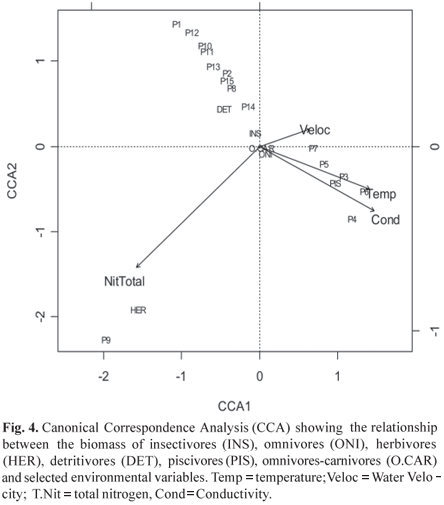This study aimed to characterize the trophic structure of the fish assemblage in streams of the Serra Japi, an ecotonal area between the Atlantic Forest and inland forests of São Paulo State, Southeastern Brazil. Fish were collected with electrofishing equipment in 15 sites covering different regions, substrate types and riparian vegetation, distributed throughout the Caguaçú River, Caxambú, Piraí and Guapeva River micro-basins, during the rainy (January/February) and dry season (June) of 2007. The 589 specimens analyzed from 22 species, were assigned to different trophic groups, discriminated through a matrix of similarity, based on the food index (IAi). The results show the formation of seven groups with a predominance of insectivorous and omnivorous species, followed by detritivores, piscivores, omnivore-carnivores and herbivores, which consumed mostly items of autochthonous origin, where algae and young insects were dominant. Canonical correspondence analysis (CCA), correlating the biomass of trophic groups to environmental variables, showed that omnivores, insectivores and omnivore-carnivores displayed a wide distribution, while detritivores, herbivores and piscivores were restricted to specific locations, related to different physical and chemical variables as total nitrogen, conductivity and temperature. Despite the increase in total biomass at the most urbanized sites, the results indicate that the streams maintain a diverse community, suggesting that most of them are in preserved conditions.
Tropical streams; Freshwater fish; Trophic ecology; Distribution









